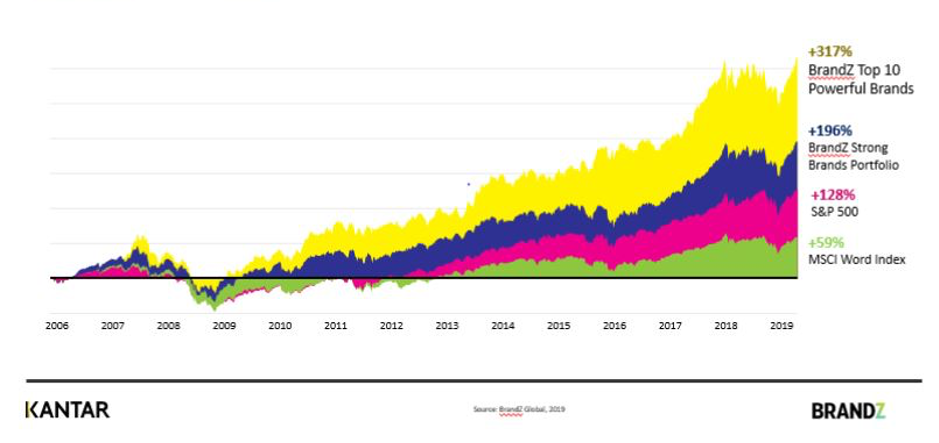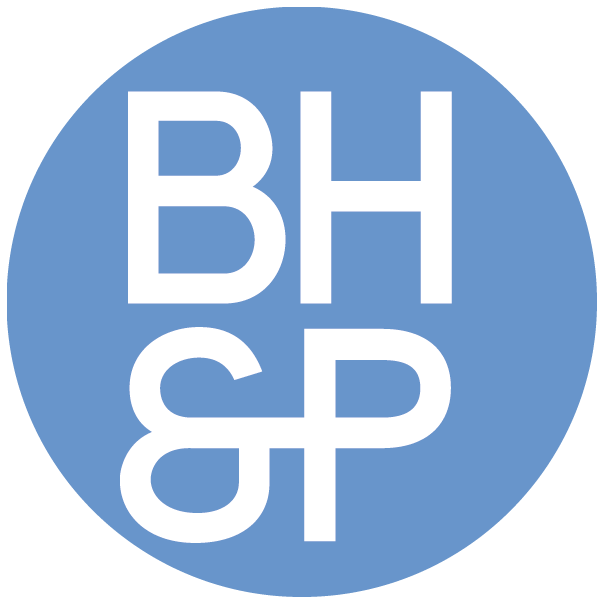
Developing your Brand Strategy in Uncertain Times
According to Marketing Week , almost 9 in 10 marketers are now delaying campaigns in response to Covid-19.
Marketers are putting spending on ice as 69% see demand for their brand’s products and services plummet amid the worsening coronavirus pandemic.
But is this the right thing to do? Surely, when the cost of media is falling through the floor, and your competitors have paused all their activity, it is exactly the right time to focus on strengthening your brand.
So why have so many marketers retreated into their shells? And how can you find the positive in the situation?
According to a recent article in Campaign Magazine, Sunita Rajan (SVP for CNN International Commercial) feels that companies are humanising themselves today by engaging in brand purpose campaigns showing they care, often by telling very human stories.
"A lot of the work we do today with brands is being able to use authentic, human storytelling," she notes. "While brands might have their shining marketing message, increasingly we see brand marketers coming to work with us to help elaborate and visualise and tell that story in a very different way."
As brand marketers, we should take the essence of what makes our brand what it is, e.g.:
“We are excellent at developing learning interventions that tap into how people really think”
“Our technology helps marketing budgets go further and reach more people”
And so on, then try to understand how to make this human and relevant.
We are in a time when people need brands’ support more than ever.
Surely, if there was ever a time to strengthen your brand, it’s now?
Finding the Positive
The impact of the coronavirus emergency is rapidly changing the world in which we live: habits are overturned, activities are drastically limited or there are new, online ways to maintain them. Opportunities to meet in person have ceased, and people are changing the way they behave.
All this is having an increasingly significant impact on businesses and charities, and across sectors. And it is likely that whilst eventually the pandemic will be in our past, some behaviours and beliefs will have been reshaped for ever.
It is especially important for both brands experiencing hard times as well as those lucky ones (think Seneca, Slack or Zoom) experiencing booms, to do what they can to communicate effectively, and to focus their brand message where it can make a positive difference.
According to a recent study reported in MediaPost, a high proportion of millennials believe that marketers can play and important role during the COVID-19 crisis, and want to see communications that address the situation in their tone and/or focus on brand initiatives.
With this in mind, marketers need to be innovative and creative in their communications with consumers.
Here are our top 4 insights into how brands should interact with customers during the COVID-19 crisis.
1. Brands Should act Responsibly to Others
We all have a part to play during this crisis. If your brand can help in any way – by sharing knowledge or skills, by discounting products that can help people that are ill, vulnerable, socially isolating – or that are helping the NHS, for example, then this is what you should do.
Find out more about how Bear Kitchen has pivoted from a B2B to a B2C delivery model – and at the same time, launched a fundraising campaign to deliver meals to the NHS.
2. Brands Should act Responsibly to their own People
Clarity of messaging, staying true to your principles and above all, being honest to staff is vital in times of crisis. If you need to play people off, furlough them, or reduce their hours or salary, then of course you must do so.
But do so with integrity and forethought, and before you do this, consider the longer-term implications.
This is a time to consider your employer brand – when we come back from lockdown, when the crisis recedes, when you need them to be more engaged than ever, how will your people really feel about your brand?
3. Brands Need to Stay Strong
We know from previous recessions that the brands that stay strong, that invest in people and pivot their strategies in times of crisis, are often the winners in the long-run.
Take a look at this chart from Kantar and Brand Z – it’s pretty clear that strong brands recovered much more quickly following the financial crash in 2008. The same trend is certain to follow COVID-19.

I love this ad from Ikea, showing how you can have fun whilst self-isolating at home. Rather than pausing activity, they have pivoted, reinforcing their brand at a time when lead generation activity would be pointless, since their stores are closed globally.
It’s great to see how great to see brands resisting the temptation to pull spend when the evidence suggests that this could be a false economy, and for agencies and production companies to develop brand new creative work under remote working circumstances.
From Tesco to Voxi, Marie Curie to Women’s Aid – check out these great examples, (link to other blog post), many of which have been made pro-bono, or on shoestring budgets.
4. Use this Time to Reflect on Brand Strategy
There has never been a more important time to review your brand.
Whether you are a local hero, a national or international brand, you can still stop and reflect on what your brand really means to people.
If it’s possible to create new content, to elevate your brand right now by doing something good, do it.
But if this is not possible, or right for you, then use the time to strengthen your brand in other ways by doing some strategic thinking to set you on the right path when the crisis is finally receding behind us.
Build Your New Brand Story
When a business starts out, it’s usually with a clear and defined sense of purpose.
But as a business grows and becomes more successful, this can become diluted, as new products and services are added to the portfolio of solutions you can provide.
When an organisation matures, becomes an established expert in a field, or even a market leader, the need to reinvest in your brand becomes less again.
But most businesses sit in the sweet trouble spot. That point somewhere in between start-up and world domination, where the business is growing and becoming ever more complex. And now you’ve been required to pivot your messaging, or product offer, or perhaps your distribution strategy, in light of COVID-19.
Gulp.
If you want review your brand strategy, with a view to coming out the other side of the pandemic focused and strong, a positioning map is a great place to start.
Creating a Positioning Map
Here’s how you do it.
Create two axes on a piece of paper.
The vertical axis represents the maturity of the business. Start-ups sit right at the bottom of the axis. Businesses that have been around for 10 years or more, sit right at the top.
The horizontal axis represents market share – on the left are competitors with very low market share, including niche players – and on the right are those with the highest market share.
Put yourself on the map, and add your main direct competitors. You can add as many as you like – it depends on your market, and who you come up against in your marketplace, time after time.
Now draw an ellipse on the map, intersecting each axis about half-way along.

Are you in, or out of the ellipse? If you are outside, then you probably have a very clear sense of purpose already. It doesn’t mean you don’t need to take a long hard look at what the world will be like post-pandemic – but the chances are, your brand will remain the same, it’s the marketing and comms strategy that you will need to adjust.
If, however, you are inside the ellipse of doom, then now’s a critical time for your brand.
Inside the Square of Doom? Here’s What you Need to do
This is definitely an exercise better managed as a team. Get your whole marketing department (or the management team if you’re a marketing department of one or two right now) involved.
And if you haven’t got a team right now – or if you just want an external point of view, you can book a free Spark! session with BH&P, and we’ll get to work helping you figure this one out.
Start by mapping your competitors’ activity – who is doing what during the crisis? Who is being innovative? Who has found something unique to say? What will your customers and prospects think?
Now sit back, and really consider what the world might look like after the pandemic.
Unemployment will have risen. More people are likely to be home-schooling, permanently. People will have the tools to work from home – but will companies let them? Money will be tight, loans will have to be repaid, favourite restaurants and brands will have gone bust leaving gaps in the market. Some people will have had reoccurrences or new occurrences of mental illness or stress. How will crime levels be affected? And so on.
And now think again about your own brand. Imagine you are sitting in a school classroom. What subjects would you get “A” grades for compared to the competition? And are these aligned to what customers and prospects will need, coming out of COVID-19?
Draw some kind of a crazy mindmap, pairing up your core strengths with what people will really need.
Is there a pattern emerging?
If so, Eureka! Start with something unique, that you can offer, and that the new world will need, and start to build your brand strategy from there.
If not, there’s more work to be done.
Be ruthless in your investigations. There are literally thousands of news articles, research projects and reports floating around in the proverbial cloud right now – so use those insights, and map some more.
There are many tools that BH&P as brand strategists can use to help you figure this out. You probably already have a few in your own marketing toolkit.
Now’s the time to dust them off and try them out. Or, alternatively, ask for help. BH&P are offering free consulting sessions. But we are not the only ones. Find someone you can trust, and get a second expert point-of-view on your brand.
Without doubt, the brands that invest in themselves now, will come out of this stronger.
A final 5 Words on Brand Strategy, Post-COVID-19
Your brand, more than anything, will help you remain strong in the new world, post-COVID-19.
In the words of J T O’Donnell, from a recent post on LinkedIn, there are...
5 soft skills people will need to have in order to get hired after COVID-19.
I’m pretty sure these are the strengths a brand will need to:
Composure: Confident, bold communications will help your brand stand out.
Resonance: You must listen to the market, adapt and create something new. Brands that think the world has not changed, will be left behind.
Practical knowledge: The starting point for every brand, however big or small, is a centre of excellence. Your “A” grades, if you will. What you are really, really good at. This has not changed – you may just need to pivot this in new ways. This will become your new brand essence.
Vision: Look forward, not back. Always, but now more than ever.
Humility: Nobody likes a showoff. The world will have changed immeasurably after COVID-19. If we learn anything from this crisis, it should be about the importance of kindness, of understanding, of appreciating the efforts of others. Anyone that appears to be profiteering from others’ misfortune will fall foul of consumer mistrust.
Strong brands will not forget what has passed, but will learn from it.
Make sure that yours is one of them.
BLOG
|4 MIN READ
BLOG
|5 MIN READ
BLOG
|4 MIN READ
BLOG
|5 MIN READ
BLOG
|4 MIN READ
BLOG
|2 MIN READ
Sign Up




